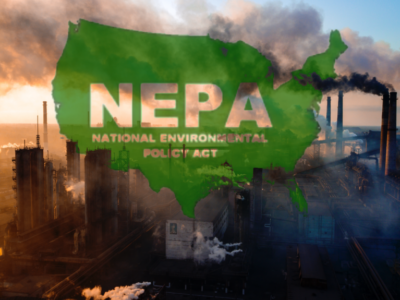It’s time the Safe Drinking Water Act got some respect
A new primer that makes the law accessible and teachable
I have been writing about drinking water issues for the past fifteen years and often been struck at how little attention the Safe Drinking Water Act (SDWA) receives in our field. Passed just two years after the Clean Water Act, it gets scant or no coverage in environmental law casebooks and is rarely taught in environmental law courses. There were plenty of conferences celebrating the 40th anniversaries of the Clean Air Act and Clean Water Act. Not so for poor SDWA.
There are certainly reasons why SDWA has not been considered part of the environmental statute canon. It does not focus on threats to the environment. Foundations and environmental groups did not consider it a priority for its first four decades. Indeed, prior to Flint, NRDC was the only national environmental group with a strong program on drinking water.
Flint, though, changed the landscape entirely. Drinking water issues have become high profile news items, most recently with lead in Newark and the emerging threats of PFOA and PFAS contamination. The exclusion of SDWA in environmental law courses seems increasingly untenable. The short shrift given to SDWA in environmental courses is also significant for practitioners, who were not taught the statute in law school.
To make teaching the law easier, I have posted a primer on SDWA. Twenty pages long and written in an accessible style, it covers the history of the law, its key provisions, successes, and challenges. It is intended for inclusion in courses and for practitioners who want a user-friendly text. The law raises fascinating issues of cost and risk assessments, environmental justice, federalism, private governance, and human rights, among others. In an era of stretched public budgets, SDWA will only grow in importance. The challenge of ensuring provision of safe drinking water is surely not going away.
The primer can be downloaded from SSRN and the UCLA repository. This is intentionally an open access resource and I hope it whets your thirst for this underappreciated law.
Reader Comments
2 Replies to “It’s time the Safe Drinking Water Act got some respect”
Comments are closed.






we seem to have bipolar approach to regulating lead. landlords are responsible for abating lead paint hazards but have no responsibility for risks posed by lead pipes that they own. to fully address risks posed by lead in drinking water, building owners should have responsibility for either replacing the service lines they own or installing/maintaining water filters. perhaps provide tax credits to incentivize lead pipe replacement.
You raise a good point, Lawrence. The split incentives between tenants and landlords over lead paint and service lines is a serious problem.